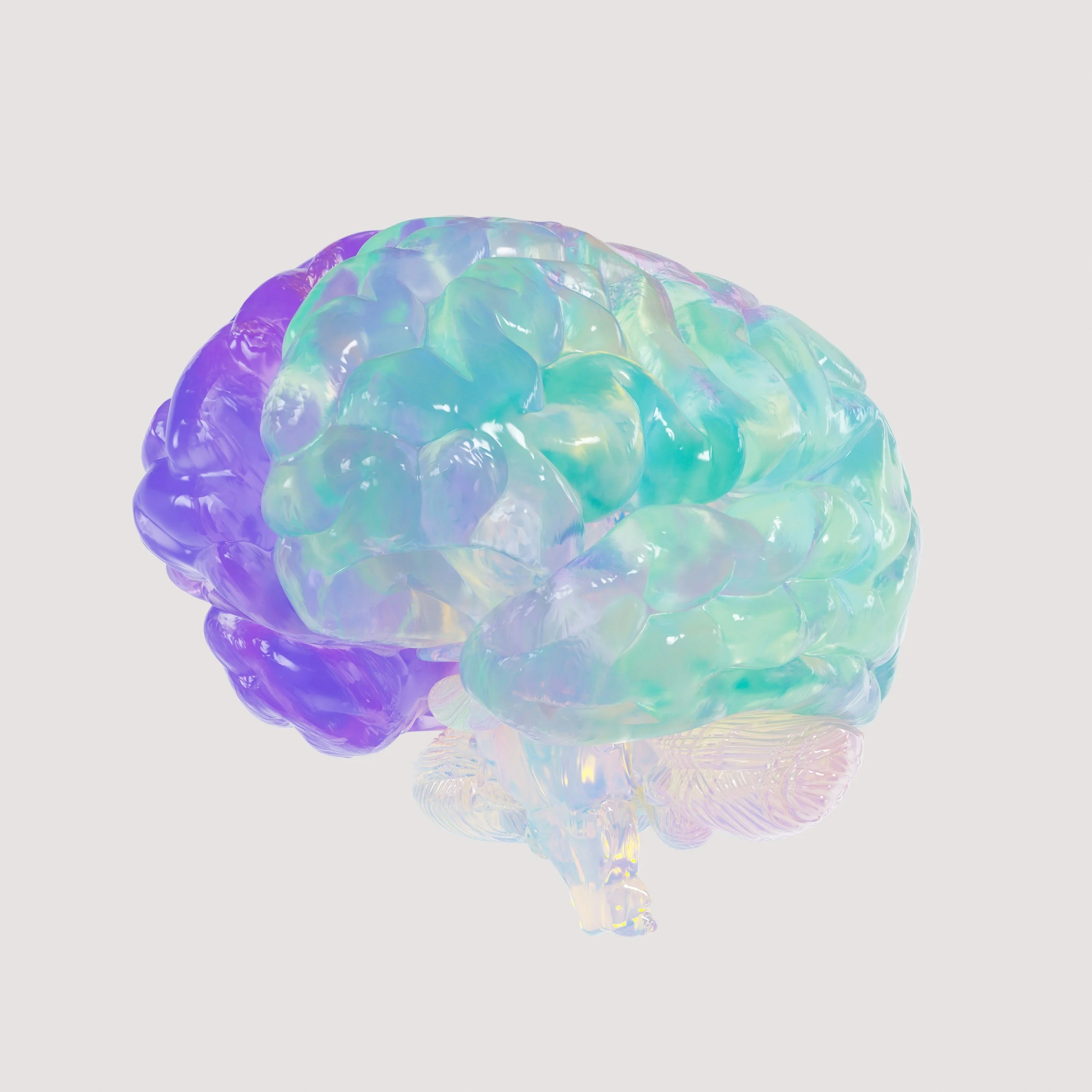Mental Imagery or Sport Imagery Practices for Athletes to Enhance Performance
A model of the brain. Half is purple and the other half is clear.
Athletes can spend many hours doing physical training to improve their performance. Picture the ice skater who is on the ice at 4:00 am repeating their double axel time after time or the basketball player who doubles down on their free throw. These are just two examples of many. But what about a technique that does not require physical practice that helps improve motor learning? Enter mental imagery, sport imagery or visualization. Mental imagery is the process of using mental stimulation of a chosen movement or situation that does not use actual physical movement that serves as a useful tool for enhancing sport-specific motor skills (Lindsay et al., 2023). Mental imagery activates the same brain regions used during the actual performance of a skill. In a more recent systematic literature review, Lindsay et al. (2023), reviewed 36 studies and found that mental imagery has a positive impact on performance especially when combined with physical practice. However, the study did acknowledge that the impact is related to how complex the skills are, elements of skills performance, and the method of how the mental imagery is delivered.
Types of Mental Imagery Techniques
There are different types of mental imagery techniques that people may consider. Here are six examples:
Process Mental Imagery
This technique invites a person to imagine the process of performing a movement or skill.
To use this technique it is important to include every step or movement necessary to complete the skill or strategy efficiently.
Outcome Mental Imagery
This technique invites a person to imagine a desired outcome.
The outcome could be running a personal record, winning a match, or scoring the winning free throw.
Motivation Mental Imagery
This technique invites a person to connect with an internal state or emotion.
Think about feeling self-confidence, pride in your performance, etc. for the purpose of building motivation and resilience.
First-Person versus Third-Person
First-person mental imagery involves using imagery that has a person viewing their performance as themself.
Third-person mental imagery involves using imagery that has a person looking at themselves from the observer perspective.
Situational Mental Imagery
This technique invites a person to imagine what it is like to overcome any potential challenges that can arise while engaging in their chosen sport.
Emotional Conditioning
This technique invites a person to engage in emotional preparation to be able to remain engage and focused throughout the emotional rollercoaster of a race, game, or competition.
The above techniques are just options. It takes time to find the ones that work best for each person.
Key Components to Keep in Mind
There are certain components that a person may want to include in their mental imagery to help make it more effective. Consider the following:
Find a comfortable practice space.
Find a space that is safe, quiet, and comfortable. A person may lay down or sit up as long as it invites a sense of calm and ease without interruption.
Incorporate as many environmental details as possible.
Humans do not perform skills or movements without being surrounded by an environment. Construct the environment in detail.
Visualize the skill in as much detail as possible.
When visualizing the skill incorporate as much detail as possible including the environment and how the environment responded to the skill.
Remember to include emotions, physical sensations, and positive thoughts.
It is okay to include how one may feel upon completing the skill or the body sensations of excitement or adrenaline.
Practice. Practice. Practice.
This technique is not a one and done type of experience. It takes repetition to build the neural pathways.
Start with a single movement before practice skills or situations that are more complex.
It is okay to combine mental imagery and physical practice or practice recordings to enliven the mental imagery.
Play with speed.
Slowing a skill down allows a person to focus on a technique.
Once comfortable with the technique a person can visualize the skills at the actual speed.
The PETTLEP Approach
As with many concepts, there are models that people can use to help guide. If the above does not resonate then give the PETTLEP approach (Holmes & Collins, 2001) a try.
Physical: Incorporate any physical sensations and movements that occur during the skill or action.
Environment: Construct the actual environment with as much detail when the skill or action is performed.
Task: Make sure to visualize the skill or action with accuracy.
Timing: Use slow motion and the actual speed or the skill or action.
Learning: As the physical skill and understanding of the skill or action improves, make sure to adjust the imagery to match that understanding.
Emotion: Make sure to include the feeling and emotions that occur during the execution of the skill or action minus the negative ones.
Perspective: Use either first-person or third-person.
Talk about an information dump! Remember that one does not have to dive into mental imagery alone. A good sport and performance consultant can also help with this process.
take action today moment:
Give mental imagery a try. Is there a skill that you would like to improve? Decide on a skill or action and set a schedule for practicing your mental imagery. Consider practicing three to four times a week.
Learn More About mental imagery:
How Imagery and Visualization Can Improve Athletic Performance
References
Lindsay, R. S., Larkin, P., Kittel, A., & Spittle, M. (2023). Mental imagery training programs for developing sport-specific motor skills: A systematic review and meta-analysis. Physical Education and Sport Pedagogy, 28(4), 444-465.https://doi.org/10.1080/17408989.2021.1991297
Holmes, P. S., & Collins, D. J. (2001). The PETTLEP approach to motor imagery: A functional equivalence model for sport psychologists. Journal of Applied Sport Psychology,13, 60–83. doi: 10.1080/10413200109339004
